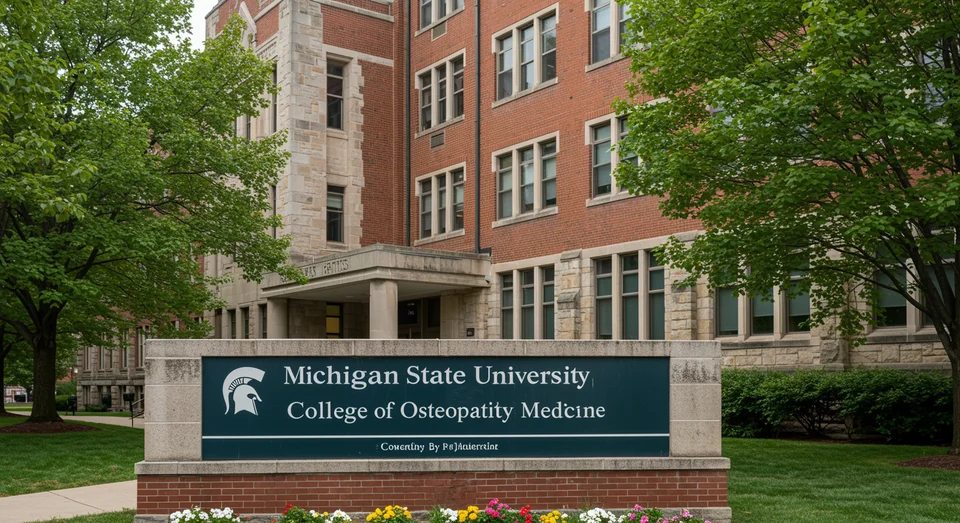Michigans Medical Schools: Community Focus Shines Amid Rankings Challenges
342 views
Michigan’s medical schools have long been a cornerstone of healthcare education, yet their latest rankings in the U.S. News & World Report for 2024 paint a picture of contrasts. While institutions like Michigan State University and the University of Michigan demonstrated their prowess in cultivating graduates who serve in primary care and underserved communities, their absence from the upper echelons of research rankings underscores the nuanced priorities that define these schools. Meanwhile, Wayne State University, Central Michigan University, and Oakland University showcased incremental progress, though their standings highlight the uphill climb faced by many regional institutions.

Michigan's Medical Schools: Balancing Community Impact with Academic Prestige
The rankings, which have become a yearly barometer for assessing the nation’s medical schools, reveal a complex tapestry of achievements and challenges for Michigan’s institutions. Michigan State University’s College of Osteopathic Medicine emerged as a standout, securing the No. 2 spot nationally for graduates practicing in primary care and No. 3 for those serving in medically underserved areas. These placements reflect the college’s longstanding commitment to addressing healthcare disparities—a mission that resonates deeply in a state where rural and underserved populations often struggle to access consistent medical care.
Central Michigan University also made waves, ranking No. 20 for graduates working in rural areas—the highest among Michigan schools in this category. This achievement is particularly significant given the school’s relatively recent entry into the medical education landscape. For a university situated in a predominantly rural region, its success in fostering healthcare professionals who return to similar communities is both a validation of its mission and a beacon of hope for areas facing physician shortages.
Wayne State University, which has historically been recognized for its urban healthcare initiatives, climbed into tier 2 for medical research. This marks a notable improvement for an institution that has often been overshadowed by larger competitors like UM-Ann Arbor. Wayne State’s rise suggests a growing emphasis on research that complements its urban-focused clinical programs, offering a pathway to greater national recognition.
However, not all Michigan schools fared equally. Oakland University and Western Michigan University found themselves in tiers 3 and 4 for primary care schools, reflecting the challenges of building robust programs that compete on a national scale. These rankings, while modest, still signify the role these institutions play in filling critical gaps in healthcare delivery across the state.
Adding complexity to the rankings is the decision by some Michigan universities, including UM Medical School, to opt out of participation in the U.S. News survey for 2024. This move, part of a broader trend among elite institutions questioning the methodology and fairness of such rankings, undoubtedly impacted their visibility. UM-Ann Arbor, a perennial giant in medical research, remains a powerhouse in reputation and output, yet its absence from the survey leaves a void in the competitive landscape.
The mixed results beg the question: what truly defines success for a medical school? Is it the ability to produce groundbreaking research or the commitment to train physicians who address the most pressing healthcare needs? Michigan’s schools seem to lean toward the latter, prioritizing community impact over academic prestige. This focus aligns with the state’s healthcare realities, where rural and underserved areas face persistent challenges in accessing care.
At the same time, the rankings highlight the tension between regional and national aspirations. Institutions like Wayne State and Central Michigan are making strides, yet their tier placements suggest that breaking into the upper ranks requires sustained investment in research infrastructure and faculty recruitment. For UM Medical School, the decision to abstain from rankings may reflect confidence in its established reputation, but it also raises questions about the evolving role of such surveys in shaping public perception.
Ultimately, Michigan’s medical schools are emblematic of a broader shift in healthcare education—one that values community engagement as much as academic excellence. In a nation grappling with physician shortages and healthcare inequities, the ability to train doctors who serve where they are needed most is arguably as vital as producing groundbreaking discoveries. As these schools continue to navigate the delicate balance between impact and prestige, their rankings may serve less as a definitive judgment and more as a reflection of the multifaceted role they play in shaping the future of medicine.
